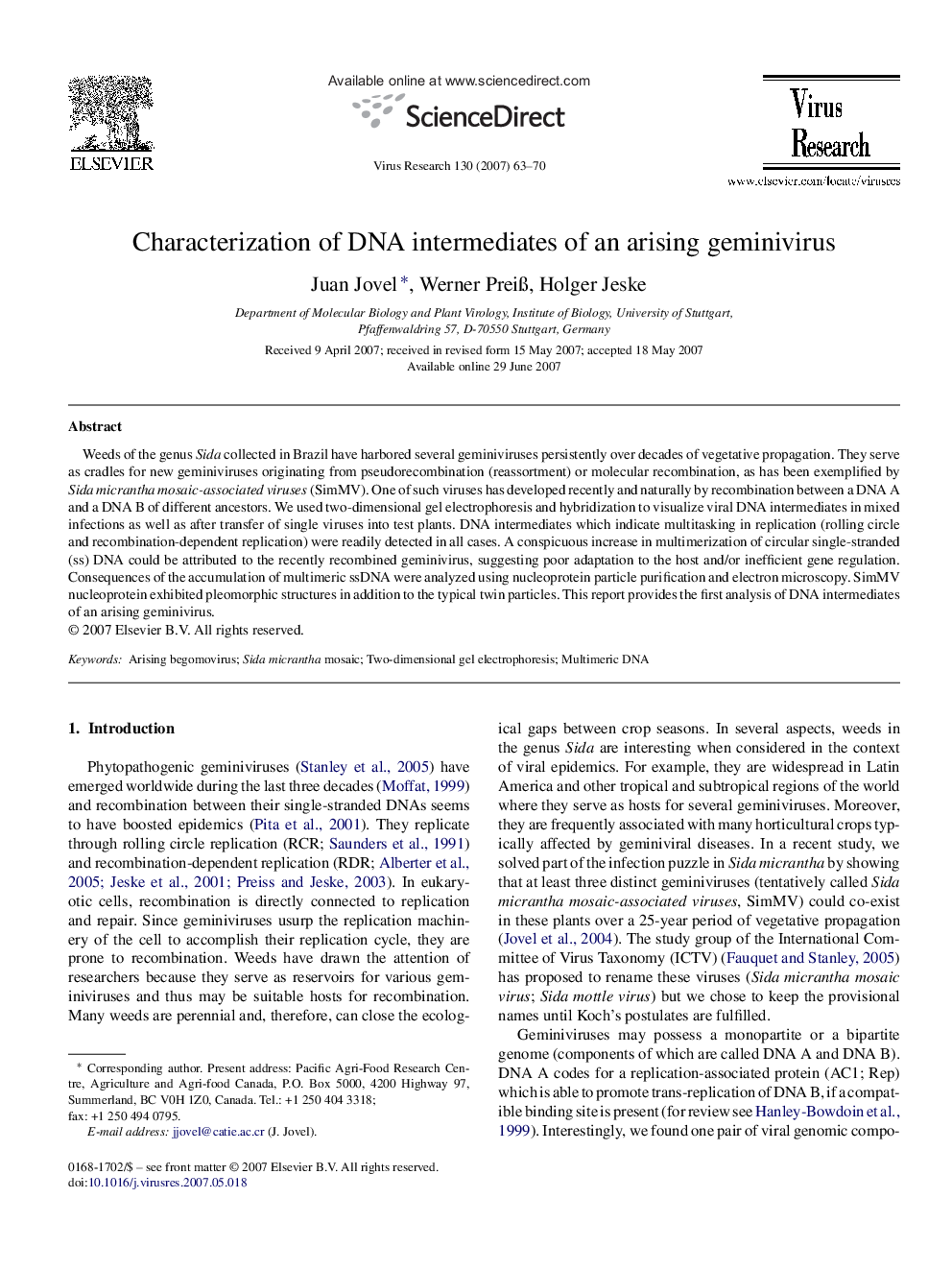| Article ID | Journal | Published Year | Pages | File Type |
|---|---|---|---|---|
| 3430652 | Virus Research | 2007 | 8 Pages |
Weeds of the genus Sida collected in Brazil have harbored several geminiviruses persistently over decades of vegetative propagation. They serve as cradles for new geminiviruses originating from pseudorecombination (reassortment) or molecular recombination, as has been exemplified by Sida micrantha mosaic-associated viruses (SimMV). One of such viruses has developed recently and naturally by recombination between a DNA A and a DNA B of different ancestors. We used two-dimensional gel electrophoresis and hybridization to visualize viral DNA intermediates in mixed infections as well as after transfer of single viruses into test plants. DNA intermediates which indicate multitasking in replication (rolling circle and recombination-dependent replication) were readily detected in all cases. A conspicuous increase in multimerization of circular single-stranded (ss) DNA could be attributed to the recently recombined geminivirus, suggesting poor adaptation to the host and/or inefficient gene regulation. Consequences of the accumulation of multimeric ssDNA were analyzed using nucleoprotein particle purification and electron microscopy. SimMV nucleoprotein exhibited pleomorphic structures in addition to the typical twin particles. This report provides the first analysis of DNA intermediates of an arising geminivirus.
